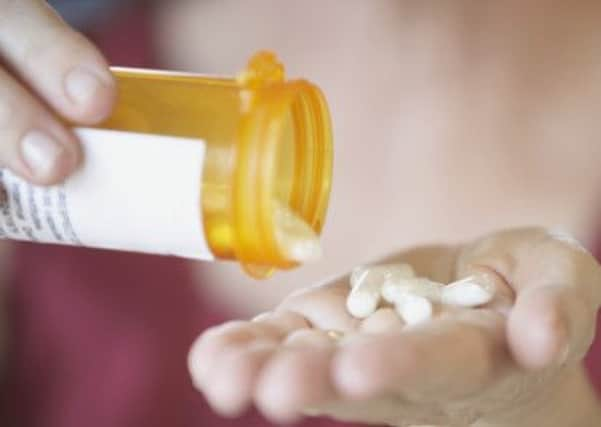The life-saving invention that has created a deadly threat


It used to seem so simple – you caught a bug, went to the doctor, collected your prescription for antibiotics and got better.
But those halcyon days are now over amid warnings from chief medical officer, Dame Sally Davies that the threat of resistance to antibiotics posed by new strains of “superbugs” was so great, it should be considered on a par with terrorism and climate change.
Advertisement
Hide AdAdvertisement
Hide AdThe problem is two-fold: antibiotics are routinely being overprescribed by doctors, to keep patients happy, which helps bacteria learn how to resist them – and there are no new antibiotics being produced because they’re not seen as profitable by big pharmaceutical companies.
Dame Sally said: “We haven’t had a new class of antibiotics since the late Eighties, and there are very few antibiotics in the pipeline.”
She warned that, unless urgent action is taken, in the next 20 years, what we now consider to be relatively simple surgical procedures, such as hip replacements and organ transplants, could become deadly, as medical developments are dragged back by 200 years.
“If we don’t take action, then we may all be back in an almost 19th-century environment where infections kill us as a result of routine operations.”
Advertisement
Hide AdAdvertisement
Hide AdSo what exactly is going on? A new breed of drug-resistant bacteria, including new strains of E coli and Klebsiella, which causes pneumonia, is on the march.
Found in the gut, they’re extremely dangerous to older people and there’s little that antibiotics can do to stop them.
A new infection surfaces every year, while no new class of antibiotics has been developed since 1987.
Meanwhile, doctors are needlessly prescribing 1.6 million courses of antibiotics every year – almost one in 20 unnecessary prescriptions. The more antibiotics we take, the more end up getting flushed into the water system, where bacteria can “learn” to resist them.
Advertisement
Hide AdAdvertisement
Hide AdBut is this really the end for effective antibiotics, a treatment which has its roots in ancient history?
While used by the Egyptians, Chinese and American Indians centuries ago, it was Sir Alexander Fleming’s discoveries in the late 1920s which paved the way for antibiotics to move into the mainstream. Ten years later penicillin was being made in industrial quantities and its first real test would come in the Second World War.
The use of penicillin on the battlefields and in military hospitals meant soldiers affected by wounds maintained a higher survival rate and recovered significantly more quickly than in past conflicts. Meanwhile in America, scientist Selman Waksman and his students discovered more than a dozen types of antibiotics during the 1940s. Scientists continued to reveal several new classes of antibiotics throughout the following two decades and for a while it seemed the medical revolution would continue forever.
In December 1945, Fleming himself sounded a warning bell. Speaking in Stockholm, he said: “The time may come when penicillin can be bought by anyone in the shops.
Advertisement
Hide AdAdvertisement
Hide Ad“Then there is the danger that the ignorant man may easily under-dose himself and by exposing his microbes to non-lethal quantities of the drug make them resistant.”
His warning was ignored. Antibiotics were made freely available for the public to buy. Viewing the oral drug as a quick fix and easy treatment, people would take them for the common cold, which is caused by a virus, something antibiotics are useless for. The first antibiotic-resistant strains of bacteria were isolated in 1946, six years after the drugs were first used. This was the start of antibiotics becoming a prescription drug, only given out by doctors.
The future concerning antibiotic resistance is bleak and seems to be an extra thing on the list to fear for our future children and grandchildren.
But action can be taken. Dame Sally’s recommendations include better hygiene in schools, hospitals, care homes and public places. She is urging GPs to prescribe antibiotics only when necessary and patients to not demand the drug when it isn’t needed.
Advertisement
Hide AdAdvertisement
Hide AdScientists are still trying to develop new types of antibiotic but, as fast as they are produced, bacteria develop strategies to avoid their effects. Dame Sally advises better incentives and more innovation for pharmaceutical companies to develop new drugs, the biggest hope of winning the battle.